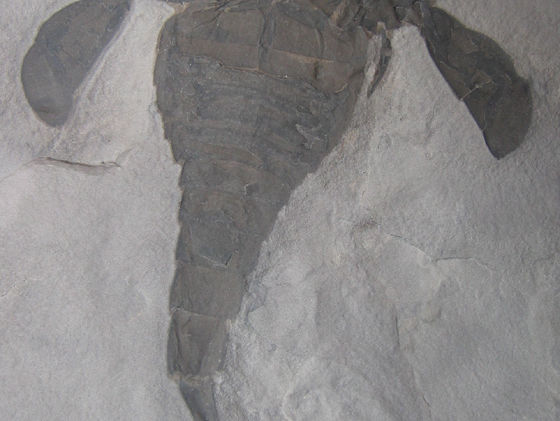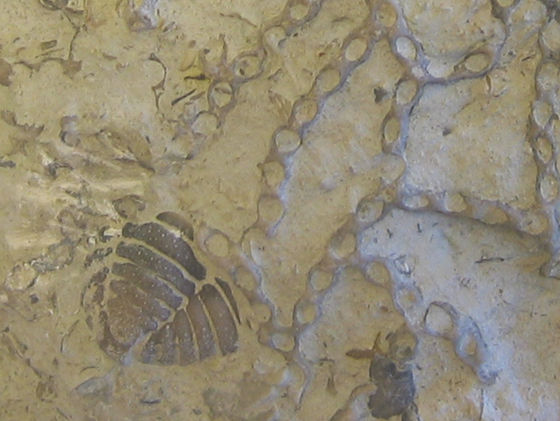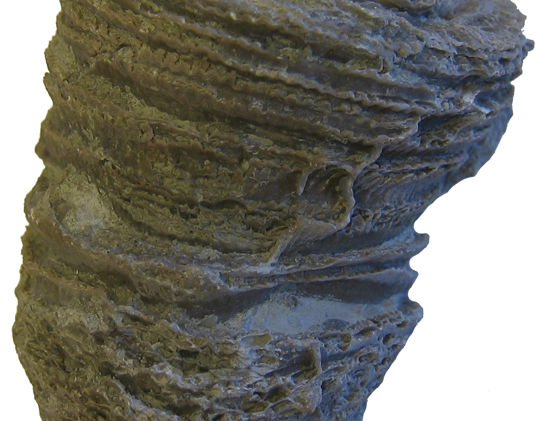Silurian Period: 443.7-416 Million Years Ago
The Silurian period spans 443.7 million years to 416 million years ago. Sir Roderick Impey Murchison (1792-1871), a Scottish geologist, worked to map the greywacke rocks underlying the Old Red Sandstone in Wales. Many of these layers contained fossils very different from those of the Cambrian. Murchison published his work as The Silurian System in 1839. This period was named for the Silures, a Celtic tribe living in Whales during the Roman conquest (USGS).
Primary Producers & Reefs
Evidence at the Ordovician/Silurian boundary indicates glaciation, lowering of sea levels and decreased temperatures. At the beginning of the Silurian reefs were virtually absent and the deposition of marine limestones were reduced. An important warm water calcareous alga also disappeared (Stanley, 1987, p. 75). Most phyla avoided extinction and their surviving representatives would expand to create new ecosystems during the Silurian period. These adaptive radiations would not only occur in the marine environments but also now on the land.
The dominant primary producers in the oceans continue to be cyanobacteria, green and red algae (Knoll, Summons, Waldbauer, and Zumberge, 2007, p. 148). As the Silurian unfolded, reef construction would be re-established. In some locations, reefs made primarily of tabulate corals make their first appearance in the Silurian (Kiessling, 2001, p. 44). Overall, stromatoporoids and tabulate corals would be the primary builders of reef systems in the Silurian. Rugose corals and bryozoans would play only minor roles in reef building (Stanley, 1987, p. 75). In some environments algae and stromatolites may have been important reef builders (Webb, 2001, p. 175).
Land Plants & Terrestrial Ecosystems
Evidence for land plants and primitive terrestrial ecosystems becomes more common in the Silurian. The first land plants belonging to the genus Cooksonia were stick-like with bifurcating stems and no leaves or roots (Kenrick & Davis, p. 22). The stems may have grown from rhizomes. The leafless, forked stems of Cooksonia stood around 3 inches tall and where photoshythetic. Wind carried spores were produced in rounded structures at the tips of stems (Jonshon & Stucky, 1995, p. 44). Cooksonia is a representative of the most primitive division of vascular plants, the Rhyniophyta. Rhyniophytes are the first plants that possessed the three evolutionary innovations for living on land, vascular tissue, cuticles and stomata (Cleal & Thomas, 2009, p. 63). Primitive land plants had no competition and attained a worldwide distribution during the Silurian. The flora at this time was low in diversity. Primitive terrestrial environments containing millipedes, centipedes, arachnids, the first fungi, bacteria, worms, and simple plants become established (Kazlev, Silurian Page). The Silurian period would unfold without any large-scale biological disturbance (Stanley, 1987, p. 75).
References
-
Cleal C.J. & Thomas, B.A. (2009). Introduction to Plant Fossils. United Kingdom: Cambridge University Press.
-
Dixon D., Cox, B., Savage, R.J.G., & Gardiner, B. (1988). The Macmillan Illustrated Encyclopedia of Dinosaurs and Prehistoric Animals: A Visual Who’s Who of Prehistoric Life. New York: Macmillan Publishing Company.
-
Falkowski, P.G. Knoll, A.H. (2007). Evolution of Primary Producers in the Sea. China: Elsevier Academic Press.
-
Fisher D., Liu T., Yip E., & Yu K. (1998). Silurian Life page in The Web Geological Time Machine by UCMP Berkley. See: http://www.ucmp.berkeley.edu/help/timeform.html
-
Johnson, K.R. & Stucky R.K. (1995). Prehistoric Journey: A History of Life on Earth. Boulder, Colorado: Roberts Rinehart Publishers.
-
Kazlev, M.A. (2002). Palaeos Website. see: http://www.palaeos.com/Timescale/default.htm
-
Kenrick, P. & Davis, P. (2004). Fossil Plants. Washington: Smithsonian Books.
-
Kiessling, W. (2001). Phanerozoic Reef Trends Based on the Paleoreef Database. In Stanley, G.D. Jr. [Ed] The History and Sedimentology of Ancient Reef Systems (41-88). New York: Kluwer Academic/Plenum Publishers.
-
Nudds J.R. & Selden P.A. (2008). Fossil Ecosystems of North America: A Guide to the Sites and Their Extraordinary Biotas. Chicago: The University of Chicago Press.
-
Stanley, S.M., (1987). Extinction. New York: Scientific American Books.
-
USGS Publication: Major Division of Geologic Time see: http://pubs.usgs.gov/gip/geotime/divisions.html
-
Webb, G.E. (2001). Biologically Induced Carbonate Precipitation in Reefs through Time. In Stanley, G.D. Jr. [Ed] The History and Sedimentology of Ancient Reef Systems (159-203). New York: Kluwer Academic/Plenum Publishers.



